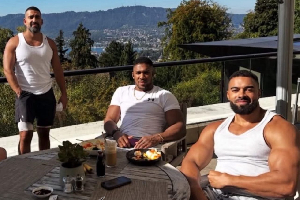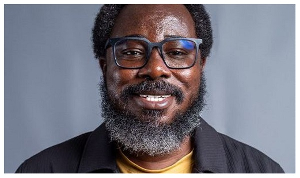Two self-confessed participants in the December 31, 1981 coup that saw the return of Flt. Lt. J.J. Rawlings into execute office barely three years after the AFRC regime are battling over the historic accounts of that day. The two, ex-Corporal Mathew Adabuga and ex-Bombardier Mathias Cudjoe, have both given separate and distinct accounts of the events of the day as well as the role of the former president, Jerry Rawlings in ensuring the success of Ghana’s last successful coup.
Both men gave the evidence after swearing oaths to tell the truth and nothing but truth, before the National Reconciliation Commission (NRC).
“But informed observers say their evidence on oath leave signals that suggest that one of them could be lying.”
Some important aspects of the two accounts of the events of the coup as well as the roles of Rawlings by both men in their separate evidence before the NRC are so distinct that one of the two ex-coup allies of Rawlings could be committing perjury.
While ex-corporal Mathew Adabuga said in his evidence that Rawlings was a coward who never took active part in the coup and had to be arrested by him in order to prevent him from deserting them, ex-Bombardier Cudjoe has questioned that aspect of Adabuga’s evidence before the NRC.
“I arrested him and put him in one of the Mowags because I said he could not abandon us,” Adabuga told the NRC in his evidence late last month, adding that Rawlings was in hiding during the coup and only emerged to assume leadership by virtue of his rank after its success.”
He said Rawlings was not actually part of the team that fought to capture power. He was used to announce the takeover at GBC because he was the only officer, Adabuga said, stressing that “If we had another officer with us, Rawlings would have been shot immediately he chickened out and asked us to escape to Benin.”
Adabuga said he was 24-years-old at the time and that Rawlings could only use his antics on the other ranks who could not read his mind to know that he was fake. “That was why he could not use any officer in the coup.”
But in a direct reference to Adabuga’s claim in his evidence before the NRC last Thursday, ex-Bombardier Cudjoe questioned Adabuga’s account and suggested that it could not be true. He narrated a series of events that showed the planning of the coup, which did not include Adabuga.
He said those he constantly met other planners at the Rawlings’ residence at Ridge during the planning of the coup. Some of the people he met there were Mr. Chris Atim, Captain Kojo Tsikata, Brigadier Arnold Quainoo and Lance Corporal Samuel Amedeka. He also met Albert Gbafa (of the infamous Rawlings tape) and Dan Dzigbolosu, who he said was more or less staying with Rawlings.
Dzigbolosu and Gbafa, Concord can reveal, were part of the abortive May 15, 1979 coup attempt by Rawlings.
According to Cudjoe on the day of operation that Rawlings was said by Adabuga to have gone into hiding, he, together with Gbafa and Rawlings were the people who managed to conquer Gondar Barracks before people belonging to the Recce group such as Adabuga joined in.
Curiously, while Adabuga in his evidence said he together with nine others including Cudjoe could be credited for the success of the coup, Cudjoe said in his response to a question that he did not recollect Adabuga at the crucial stage where both men claimed they were in a convoy of two Mowags that took Rawlings to the Ghana Broadcasting Corporation (GBC) to make his coup speech.
He however agreed that just about 10 people were responsible for the coup and that it could have been foiled if the security apparatus had been up and doing. Interestingly, both Adabuga and Cudjoe claim they were driving, commanding or were with Rawlings in a Mowag at about the same time during the coup.
Both also claim they were largely responsible for the success of the coup.
The two have apologized to Ghanaians for the subsequent atrocities, sufferings and brutalities the coup wreaked.
In Adabuga’s evidence, he named the 10 people who he said were the “original 10” architects of the 31 December 1981 military coup as Messrs. Rawlings, C.C. Addae, Albert Kwasi Gbafa George Agyekum, Mathias Cudjoe, Samuel Amedeka, Daniel Dzigbolosu, Amidu and Mensah, both from the Air force and himself. In his evidence, ex-Bombardier Mathias Cudjoe did not distinct role played Adabuga.
Instead, he directly questioned when Rawlings went into hiding as claimed by Adabuga. He said he was with Rawlings and others when they started the operation at midnight behind the Trade Fair Centre at La, Accra to the stage when they broke their way to GBC to announce the overthrow of the Limann administration.
He told the Commission how he, Rawlings and a few military personnel broke into the Gondar Barracks Armoury after Rawlings told him the RECCE ‘chaps’ that he wanted to use had told him that was impossible.
They were also afraid of being arrested and jailed if the coup was not successful and kept postponing the coup until he (Cudjoe) assured Rawlings that he could successfully have access to the armoury to facilitate the staging of the coup, he said.
Mathias Cudjoe, who says he is now an evangelist said he is now an evangelist said he single-handedly used a pair of scissors to scare soldiers on guard duties at GBC in Accra in 1977.
Witness said he was, however, arrested when he was about to enter the studios to announce the overthrow of General Acheampong’s government and the birth of his Christian Revolutionary Council, which was to be led by chiefs and Christians.
Cudjoe said he was detained at the Military Intelligence Guardroom and later for two months at the Special Branch, now Bureau of National Investigations (BNI), and the Nsawam Prisons for a year and a half, after which he was discharged from the Army.
His release came after the Palace Coup of General F.W.K. Akuffo, he said, and added that he was called back into the Army after power was handed over to the Limann administration.
He said after his return home from Togo in 1980, a sub-chief from his hometown informed him that Rawlings was looking for him. According to him, he contacted Rawlings later in Accra after which he was briefed of the planned coup. He then visited home and a man took him to a cemetery, where some rites were performed for him and he was given some talismans for spiritual fortification and protection with specific instructions on the use of the talismans, after which, he came back to Accra for the Operation.
He criticised the Security Advisor’s at that time for advising the grounding of Mowags leaving only two at the Gondar Barracks. He said six of them including Rawlings, Corporal Mensah, Albert Gbafa and Dzigbolosu, assembled at the Trade Fair, La, and advanced towards the RECCE Regiment Cook House. Rawlings, he said lifted the barbed wires with his hands for him to go through to disarm a sentry after which they eventually had access to the armoury.
Cudjoe said in the process of their access to the armoury, Major Collison, who advanced closed to them was shot. He was not armed, he said, adding that he did not know the one who shot Major Collison but said he was sorry for the pain caused Collison’s wife, who, the Commission’s chairman Justice Kweku Amua-Sekyi said had also filed a petition to the Commission.
Cudjoe said when Major Collison died, he saw Amedeka remove what “he had on and replaced it with Major Collison’s.”
He said they waited and Flt. Lt. Rawlings went on his rounds again. Later a number of soldiers from the military intelligence who were in a white Peugeot car and wanted to counter-attack were all crushed. In the process, Capt. Agbanti was shot in the thigh and Rawlings ordered for him be sent to the 37 Military Hospital.
The counter troops later joined them and they headed for the Broadcasting House on the instructions of Rawlings to make broadcast of the new government on January 1, 1982.
Cudjoe said at the GBC, they met Lance Corporal Halidu Giwa and were later joined by Sgt Agorha. They lost only one soldier in action. They overpowered the resistance of the troops guarding there and later met the staff and came into contact with Mr. Charles Asinor, the then Director of the Ghana Broadcasting Corporation, who after an initial resistance succumbed to open the studio for the announcement.
He said he later stopped a Peugeot caravan on the road in front of the GBC, ordered the passengers out and took over the vehicle. He drove it to filling station at the Kwame Nkrumah Circle, but he did not pay for the fuel.
He said he later used the vehicle to convey terrified workers home. On return, he found the five people had ordered out of the car and shot dead and lying in pools of blood. He took their bodies to a plantain farm near the Broadcasting House.
The next morning, he went to the 37 Military Hospital and had the five dead bodies conveyed to the hospital’s mortuary.
The Broadcasting House became his abode thereafter, he said, adding, late one evening, Mr. Amartey Kwei, a member of the PNDC, came with Amedeka to the Broadcasting House and asked him to accompany him to Dansoman (a suburb of Accra).












